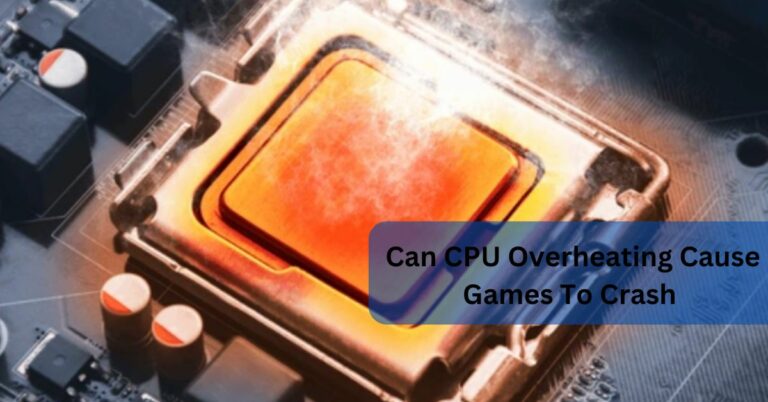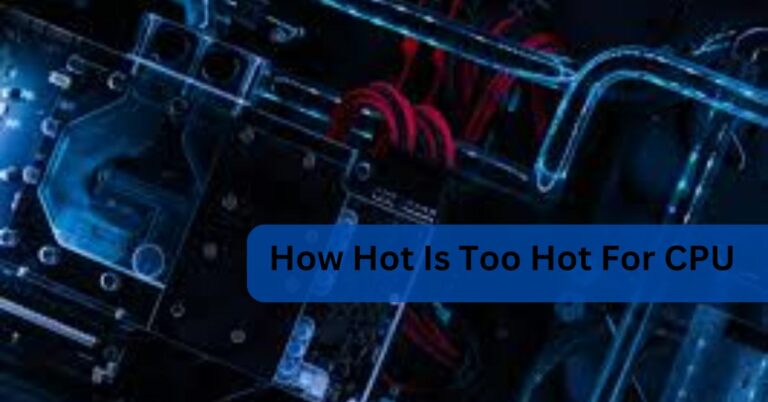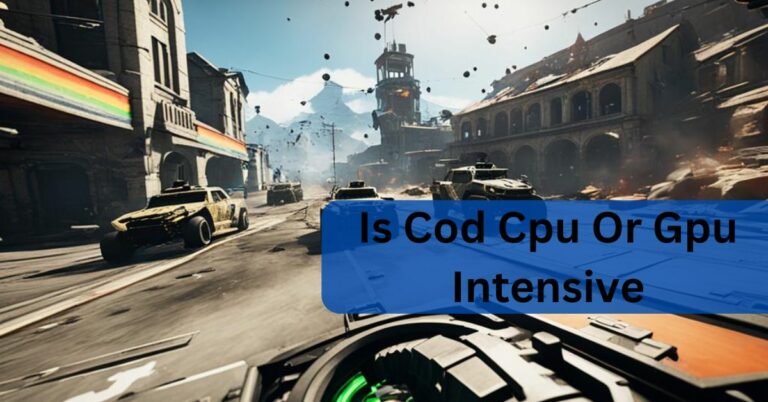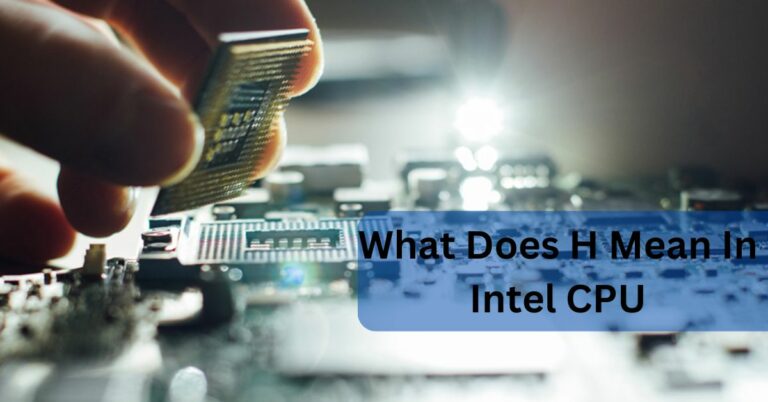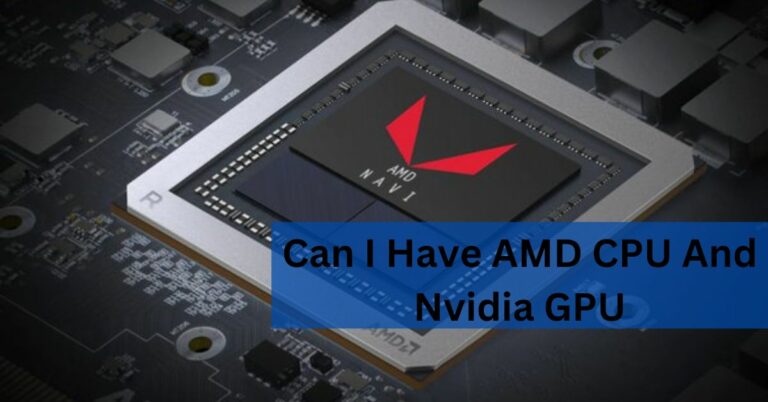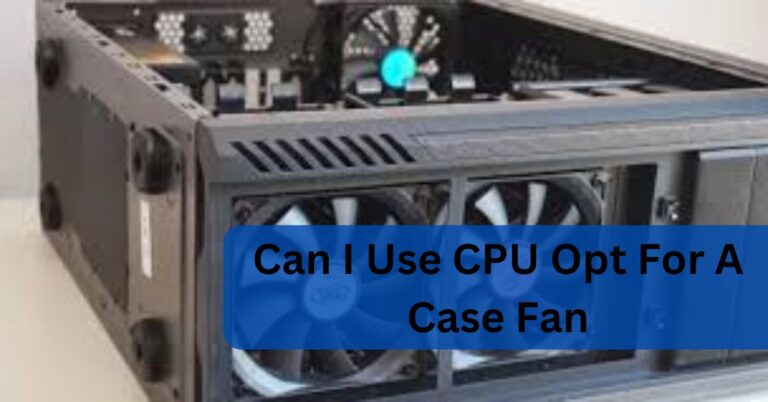Does Streaming Use CPU Or GPU – A Comprehensive Guide in 2024!
Streaming has become an integral part of our digital lives, from live gaming broadcasts to watching movies and TV shows online. As streaming technology advances, understanding the hardware requirements can help improve performance and quality.
“Streaming uses both the CPU and GPU. The CPU manages video encoding and general tasks, while the GPU helps with rendering graphics and video quality. A balance between both is important for smooth streaming performance”
A common question that arises is whether streaming primarily relies on the CPU (Central Processing Unit) or the GPU (Graphics Processing Unit). Here’s a detailed look at how each component contributes to the streaming process.
Does Streaming Use CPU Or GPU?
Streaming mostly uses the CPU for processing and encoding data, while the GPU improves video quality and smoothness. For better streaming, a powerful CPU with many cores is crucial, and a good GPU helps with clearer visuals.
Read more: Can CPU Overheating Cause Games To Crash – A Comprehensive Guide in 2024!
CPU vs GPU: The Core Components of a Streaming Setup!
CPU (Central Processing Unit):
The CPU, often referred to as the brain of the computer, handles general processing tasks. It performs calculations, runs applications, and manages data. In streaming, the CPU is responsible for encoding video data, managing system tasks, and ensuring smooth performance by handling multiple processes simultaneously.
GPU (Graphics Processing Unit):
The GPU is designed specifically for handling graphics and visual tasks. It processes and renders images, videos, and animations efficiently. In streaming, the GPU enhances video quality and smoothness by taking on rendering tasks, which helps in delivering clearer and more fluid visual content.
How does the CPU handle streaming Tasks?
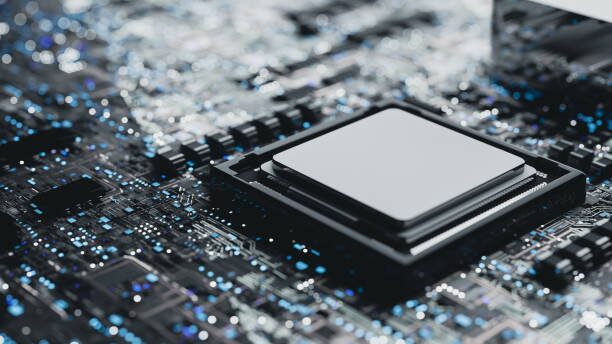
The CPU handles streaming tasks by encoding video data, managing system processes, and ensuring smooth operation. It processes data from the internet and coordinates various applications, making sure the streaming runs efficiently and without interruptions.
Read more: What Does H Mean In Intel CPU – A Comprehensive Guide in 2024!
CPU or GPU: Which is More Important for Streaming?
CPU Streaming:
The CPU handles tasks like encoding video data and managing system operations. It ensures that the streaming process runs smoothly by processing data and performing multiple functions at once.
GPU Streaming:
The GPU focuses on rendering graphics and visual content. It enhances the quality and smoothness of the video stream by processing and displaying high-quality visuals.
Balancing CPU and GPU Usage for Optimal Streaming Performance!
- Monitor Resource Usage: Regularly check CPU and GPU usage to ensure neither is overburdened, which can impact streaming quality.
- Upgrade Hardware: Invest in a high-performance CPU and GPU to handle encoding and rendering tasks efficiently, reducing lag and improving stream quality.
- Optimize Encoding Settings: Adjust encoding settings to balance CPU load, using hardware acceleration if available to offload some tasks to the GPU.
- Manage Background Processes: Close unnecessary applications and processes to free up CPU resources, ensuring smoother streaming performance.
- Update Drivers: Keep your GPU drivers updated to improve performance and compatibility with streaming software.
- Configure Streaming Software: Set your streaming software to use the GPU for video encoding if supported, reducing CPU workload and enhancing performance.
- Adjust Quality Settings: Lower streaming quality settings if your hardware struggles, balancing between high-quality visuals and smooth performance.
- Regular Maintenance: Perform routine maintenance, such as cleaning hardware and ensuring proper cooling, to keep both CPU and GPU running efficiently.
Choosing the Right Hardware for Your Streaming Needs!
To choose the right hardware for streaming, select a powerful CPU for smooth encoding and a good GPU for clear visuals. Ensure both are high-quality to handle streaming tasks efficiently and provide a smooth, high-quality viewing experience.
Read more: How Many Cores In A CPU – Ultimate Guide In 2024!
Optimizing CPU and GPU Usage for Smooth Streaming!
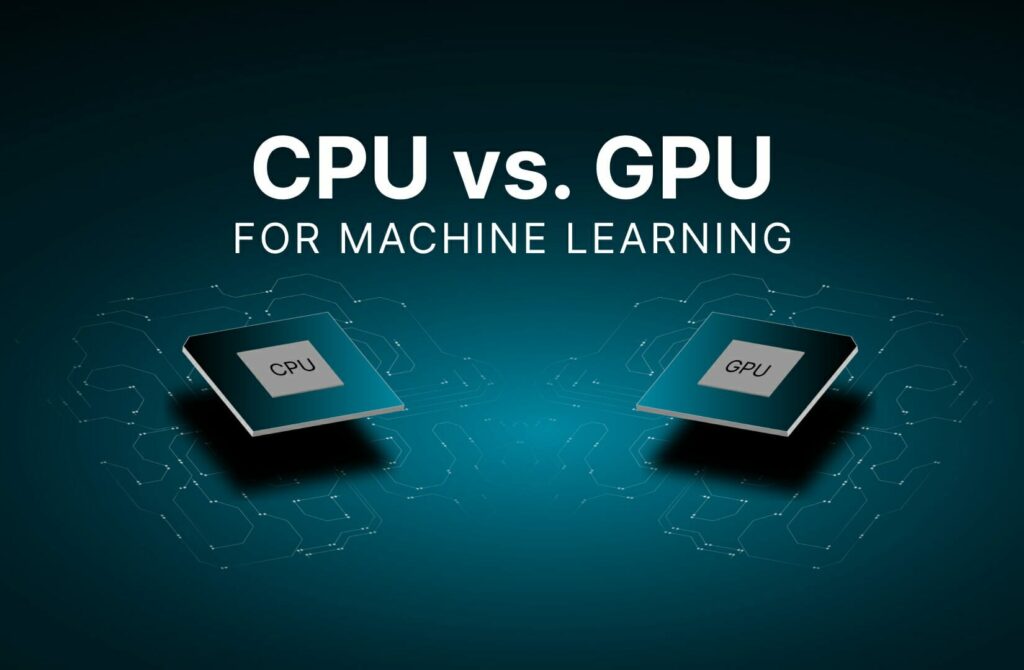
Optimizing CPU Usage for Smooth Streaming:
Optimizing CPU usage involves configuring settings to balance the load efficiently. This includes adjusting encoding settings, closing background applications, and monitoring CPU performance to ensure it handles streaming tasks without becoming overloaded or causing lag.
Optimizing GPU Usage for Smooth Streaming:
Optimizing GPU usage focuses on enhancing visual performance. This includes updating GPU drivers, using hardware acceleration for encoding, and managing video quality settings to ensure the GPU efficiently handles rendering tasks, providing clear and smooth visuals during streaming.
Read more: Is CPU A Storage Device – A Complete Guide in 2024!
CPU vs GPU Performance in Streaming Scenarios!
CPU Performance in Streaming:
The CPU manages tasks like encoding video data and handling system processes. Good CPU performance ensures smooth data processing and efficient multitasking, which is crucial for stable and high-quality streaming.
GPU Performance in Streaming:
The GPU focuses on rendering and displaying high-quality visuals. Strong GPU performance enhances video clarity and smoothness, providing a better visual experience during streaming by handling complex graphics.
Hardware and Software Configurations for Maximum Streaming Efficiency!
For maximum streaming efficiency, use a powerful CPU and GPU to handle processing and rendering tasks. Ensure your streaming software is updated and configured for optimal performance. Also, close unnecessary apps and monitor your hardware to maintain smooth streaming.
What is more important to have a good GPU or CPU?
Both GPU and CPU are important for streaming. A good CPU handles data processing and encoding, while a strong GPU improves video quality. For the best performance, ensure you have a high-quality CPU and GPU to balance these tasks effectively.
What happens with streaming when your CPU is much more powerful than your GPU?
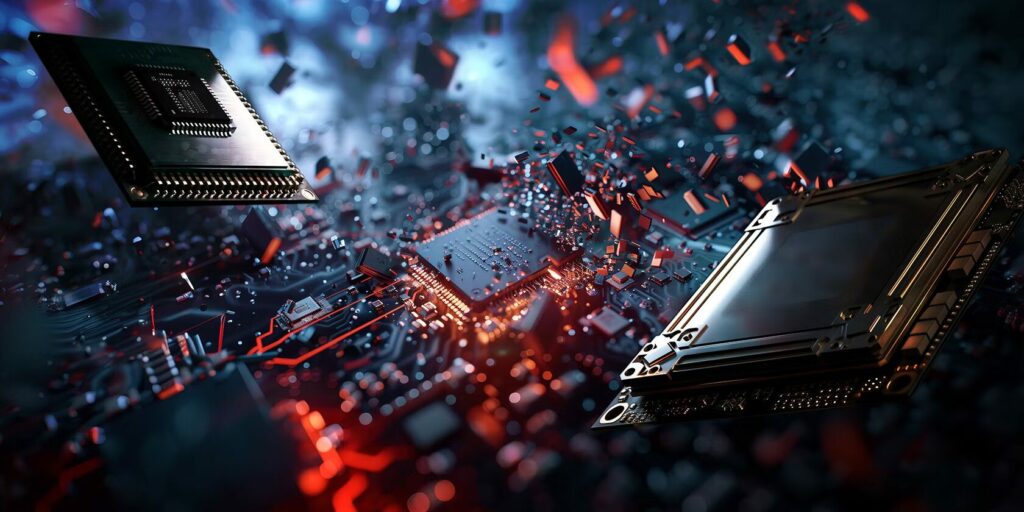
If your CPU is much more powerful than your GPU, the CPU will handle most tasks, but the GPU might limit video quality and smoothness. Streaming performance may suffer if the GPU can’t keep up with the demands for clear visuals.
Read more: Is CPU Hardware or Software – Ultimate Guide – 2024!
Does streaming use or require CPU or GPU?
Streaming requires both CPU and GPU. The CPU handles data processing and encoding, while the GPU improves video quality and smoothness. Both components are needed for optimal streaming performance, with each playing a crucial role in delivering a good experience.
The Role of the GPU in Streaming!
The GPU improves streaming by rendering high-quality visuals and smooth video playback. It helps with displaying clear graphics and reduces lag, making the video experience better by handling complex visual tasks efficiently.
Does streaming use CPU or GPU on Twitch?
On Twitch, streaming uses both CPU and GPU. The CPU handles encoding and data processing, while the GPU enhances video quality and smoothness. Both are important for a good streaming experience and clear visuals.
Does Discord streaming use CPU or GPU?
Discord streaming uses both CPU and GPU. The CPU handles encoding and managing data, while the GPU improves video quality and smoothness. Both components work together to ensure a clear and smooth streaming experience.
What is the difference between CPU streaming and GPU streaming?
CPU Streaming:
CPU streaming involves using the Central Processing Unit to handle tasks like encoding and processing video data. It manages general computing tasks, and data handling, and ensures smooth operation by running multiple processes.
GPU Streaming:
GPU streaming uses the Graphics Processing Unit to render and display high-quality visuals. It focuses on enhancing video clarity and smoothness by handling complex graphics and visual tasks, improving the overall video experience.
Streaming Software and its Impact on CPU and GPU Usage!
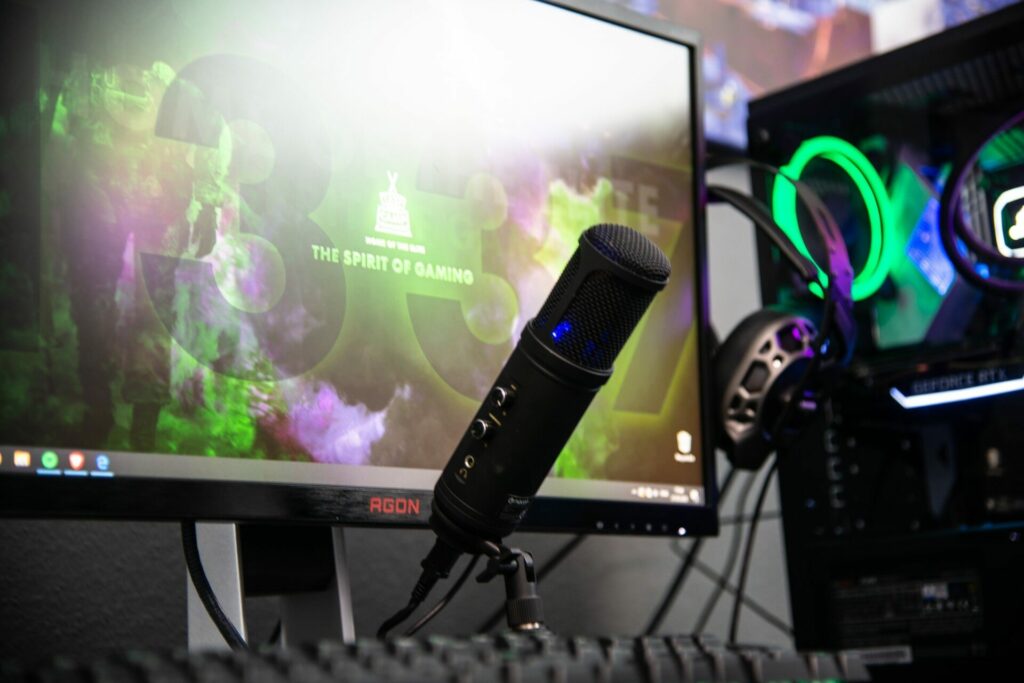
Streaming software affects CPU and GPU usage by determining how video is encoded and rendered. Efficient software balances the load, reducing strain on both CPU and GPU, while poorly optimized software can overload one or both, impacting streaming quality.
Read more: Is 100°C Too Hot for CPU – Complete Guide – 2024!
Should I upgrade my CPU or GPU for better-quality streaming?
For better-quality streaming, upgrade both CPU and GPU if possible. A stronger CPU improves encoding and processing, while a better GPU enhances video clarity and smoothness. Both upgrades contribute to a higher-quality streaming experience.
AI and ML in CPU/GPU Optimization for Streaming!
AI in CPU/GPU Optimization for Streaming:
AI (Artificial Intelligence) improves CPU and GPU performance by analyzing data and making adjustments. It helps optimize resource usage, manage tasks efficiently, and enhance streaming quality by predicting and responding to system needs.
ML in CPU/GPU Optimization for Streaming:
ML (Machine Learning) uses algorithms to learn from data and improve CPU and GPU performance. It adapts settings based on past usage and patterns, optimizing streaming by ensuring balanced and efficient use of resources.
How CPUs and GPUs Will Shape Future Streaming?
Future streaming will benefit from more powerful CPUs and GPUs. Better CPUs will handle complex processing tasks, while advanced GPUs will improve video quality and smoothness. Together, they will make streaming more efficient and visually impressive.
What will be Cloud-Based Streaming?
Cloud-based streaming will let you watch content from the internet without needing powerful hardware. The cloud handles processing and storage, so your device only needs a good internet connection to stream high-quality video smoothly.
Read more: Can I Plug A Case Fan Into CPU OPT – A Comprehensive Guide in 2024!
Developing Metrics for CPU and GPU Streaming Performance!

CPU Streaming Performance Metrics:
CPU streaming performance metrics measure how effectively the CPU handles tasks such as encoding and data processing. Key metrics include processing speed, encoding efficiency, and how well the CPU manages multiple tasks simultaneously to ensure smooth streaming.
GPU Streaming Performance Metrics:
GPU streaming performance metrics assess how well the GPU renders and displays visuals. Important metrics include video quality, rendering speed, and smoothness of playback. These metrics ensure the GPU enhances visual clarity and maintains a fluid streaming experience.
Is Streaming CPU Or GPU Intensive?
Streaming can be both CPU and GPU intensive. The CPU handles video encoding, which can be demanding, while the GPU manages graphics rendering. If you’re gaming and streaming together, both components will be heavily used.
FAQS:
Is streaming based on CPU or GPU?
Streaming depends on both the CPU and GPU. The CPU handles video encoding and multitasking, while the GPU helps with rendering graphics and video quality. A stronger CPU is better for software encoding, and a powerful GPU aids with hardware encoding.
Does OBS use CPU or GPU?
OBS uses both CPU and GPU. The CPU handles encoding and processing tasks, while the GPU improves video rendering and quality.
Do I need a good CPU for streaming?
Yes, a good CPU is essential for streaming because it handles encoding and processing tasks. A powerful CPU ensures smooth performance and better quality.
Should I upgrade the CPU or GPU for streaming?
You should upgrade both CPU and GPU for optimal streaming. A strong CPU improves processing and encoding, while a good GPU enhances video quality and smoothness.
What should my CPU be at when streaming?
Your CPU usage should ideally be between 50-70% when streaming. This ensures enough power for streaming while leaving headroom for other tasks.
Do you need more CPU cores for streaming?
Yes, more CPU cores can improve streaming performance by handling multiple tasks more efficiently. This helps with encoding and processing data smoothly during streaming.
What CPU do streamers use?
Streamers often use high-performance CPUs like the Intel Core i7 or AMD Ryzen 7. These CPUs provide the processing power needed for smooth encoding and multitasking.
What are the minimum CPU specs for streaming?
The minimum CPU specs for streaming are typically a quad-core processor, such as an Intel Core i5 or AMD Ryzen 5. These provide sufficient power for basic streaming and encoding tasks.
Which streaming service uses less CPU?
Streaming services like Netflix or YouTube use less CPU because they handle encoding on their servers. This reduces the CPU load on your device compared to live streaming or gaming.
Conclusion:
“Streaming relies on both the CPU and GPU, each playing a distinct role. The CPU handles encoding and processing, while the GPU improves video quality and smoothness. For optimal streaming, it’s important to have a strong CPU and GPU. Upgrading both can enhance performance and provide a better viewing experience”


